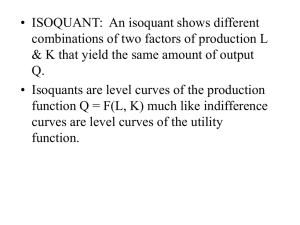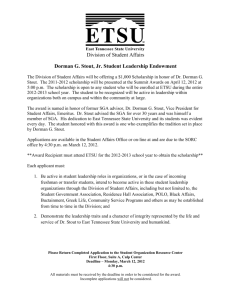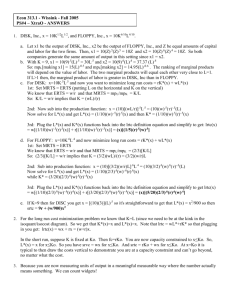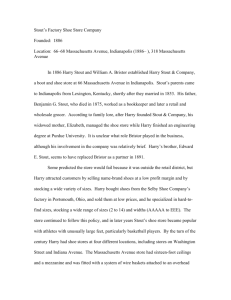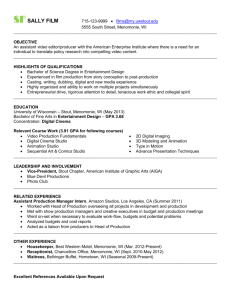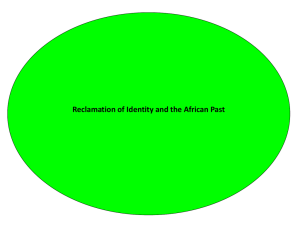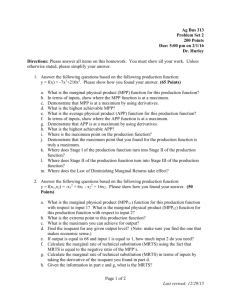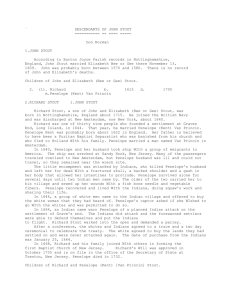Lahore School of Economics
advertisement
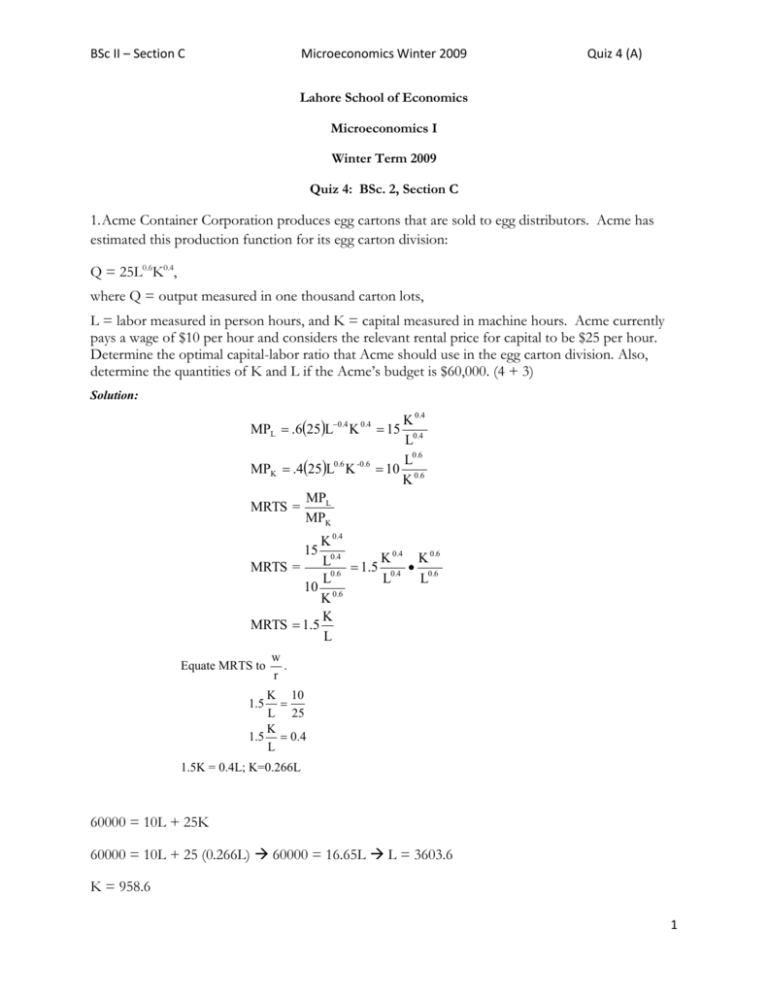
BSc II – Section C Microeconomics Winter 2009 Quiz 4 (A) Lahore School of Economics Microeconomics I Winter Term 2009 Quiz 4: BSc. 2, Section C 1. Acme Container Corporation produces egg cartons that are sold to egg distributors. Acme has estimated this production function for its egg carton division: Q = 25L0.6K0.4, where Q = output measured in one thousand carton lots, L = labor measured in person hours, and K = capital measured in machine hours. Acme currently pays a wage of $10 per hour and considers the relevant rental price for capital to be $25 per hour. Determine the optimal capital-labor ratio that Acme should use in the egg carton division. Also, determine the quantities of K and L if the Acme’s budget is $60,000. (4 + 3) Solution: K 0.4 L0.4 L0.6 10 0.6 K MPL .625L0.4 K 0.4 15 MPK .425L0.6 K -0.6 MRTS = MPL MPK K 0.4 0.4 0.6 L0.4 1.5 K K MRTS = L0.6 L0.4 L0.6 10 0.6 K K MRTS 1.5 L 15 Equate MRTS to w . r K 10 L 25 K 1.5 0.4 L 1.5 1.5K = 0.4L; K=0.266L 60000 = 10L + 25K 60000 = 10L + 25 (0.266L) 60000 = 16.65L L = 3603.6 K = 958.6 1 BSc II – Section C Microeconomics Winter 2009 Quiz 4 (A) 2. A paper company dumps nondegradable waste into a river that flows by the firm's plant. The firm estimates its production function to be: Q = 6KW, where Q = annual paper production measured in pounds, K = machine hours of capital, and W = gallons of polluted water dumped into the river per year. The firm currently faces no environmental regulation in dumping waste into the river. Without regulation, it costs the firm $7.50 per gallon dumped. The firm estimates a $30 per hour rental rate on capital. The operating budget for capital and waste water is $300,000 per year. a. The state environmental protection agency plans to impose a $7.50 effluent fee for each gallon that is dumped. Assuming that the firm intends to maintain its pre-fee output, how much capital and waste water should the firm employ? (5 + 4) b. How much will the firm pay in effluent fees? (3) Solution: a. MPW = 6K MPK = 6W MRTS 6K K 6W W Rate of water charge to price of capital: PW 7.5 .25 PU 30 Equating MRTS to ratio of input prices K 0.25, K = 0.25W W C = P W W + P KK 300,000 = 7.50W + 30K recall K = 0.25W 300,000 = 7.5W + 30(0.25W) 300,000 = 7.5W + 7.5W W = 20,000 gallons K = 0.25W K = 0.25(20,000) K = 5000 Q = 6(5000)(20,000) Q = 600,000,000 PW becomes $15 (7.50 previous cost + effluent fees). ratio of input price is 2 BSc II – Section C Microeconomics Winter 2009 Quiz 4 (A) PW 15 0.5 PK 30 MRTS K W Hold Q constant at 600,000,000 Q = 6KW K = 0. 5W 600,000,000 = 6(0.5W)(W) 600,000,000 = 3W2 200,000,000 = W2 W = 14,142.13 or W = 14,142 K = 0.5(14,142) K = 7071 (decimal form will be accepted) b. Effluent fee is 7.5 x 14142 = 106065 3. Bridget's Brewery can jointly produce dry stout and sweet stout. The cost function for joint 1 1 production is: CD, S q1 , q2 6q1 8q2 10q1 3 q2 3 , where q1 is the quantity of dry stout and q2 is the quantity of sweet stout Bridget produces. If the brewery produces dry stout alone, the cost function is: CD q1 6q1. If the brewery produces sweet stout alone, the cost function is: CS q2 8q2 . Calculate Bridget's degree of economies of scope if she produces 27 units of dry stout and 64 units of sweet stout. Does this tell you anything about economies of scale in the Brewery? (5) Solution: SC CD q1 CS q2 CDS q1 , q2 CDS q1 , q2 10 27 64 3 1 1 6 27 8 64 10 27 3 64 3 1 3 1 0.18. Since the measure is positive, Bridget enjoys economies of scope for dry and sweet stout production. No, because economies of scale and economies of scope are not related to eachther! 3
